Iliopsoas Muscle Pain
When feeling pain in the front of the hip joint during bending the thigh which also radiates down the leg, it is indicated to be Iliopsoas muscle pain. sometimes this pain radiates toward the buttocks.
This pain occurs due to overuse or muscle injury.
This muscle injury leads to muscle pain with swelling and spasms.
This muscle pain is relieved by the use of the RICE principle, pain medication, and physiotherapy treatment.
Anatomy of the iliopsoas muscle
- The iliopsoas muscle is a large compound muscle that is situated in the inner hip joint.
- Iliopsoas muscle: iliacus and psoas are major muscles.
- This iliopsoas muscle has an extensive origin.
- Psoas major muscle: it arises from the 12th thoracic and 5th lumbar vertebrae.
- Iliacus muscle: it arises mainly from the iliac fossa of the pelvis.
- Then both muscle fibers combine into a single muscle belly around the pelvic brim.
- The iliopsoas muscles are inserted into the lesser trochanter of the femur, and the function of this muscle is the flexion of the hip joint.
- Due to these proximal attachments, this psoas major muscle is produced for additional activities of the lumbar vertebral column.
Causes of the iliopsoas muscle pain
This muscle pain is caused by the overuse of the muscle.
It occurs mostly in athletes and other people who exercise regularly.
It occurs when the repetitive use of these iliopsoas muscles in daily activities like running, walking and climbing.
Iliopsoas bursitis:
Iliopsoas bursitis involves the muscles around the hip joints.
A bursa is creat by a liquid-filled sack in the muscles, ligaments, and joints.
Hip Arthritis:
This pain is produced due to arthritis in the hip joint.
Sometimes this pain is built due to a chronic condition.
Iliopsoas muscle Tightness:
this pain is produced due to tightness in the hip flexor muscle, and tightness occurs due to prolonged and excessive sitting.
Injury :
When occurring any injury in the hip joint which is also produced this muscle pain.
This injury occurs mostly due to overuse and overloading of the muscle.
It also occurs due to trauma.
Symptoms of the iliopsoas muscle pain
- This injury produces pain in the muscle region.
- It is produced by swelling and spasms in the muscle area.
- You feel pain in the front of the hip which is radiate down the leg and also radiates this pain in the buttocks.
- Also, feel stiffness in the morning.
- The muscle pain area also presents tenderness and trigger points.
- You feel weakness in the hip action.
You are also feeling pain during some movements including:
- When you do the exercise.
- During walking up and downstairs.
- If you do extend and lift one or both legs.
Diagnosis of the iliopsoas muscle pain
- When you feel pain severe and are not to relive after primary treatment of 2 to 3 days then contact the doctor.
- The doctor is follow the assessment and tries to know the cause of the injury.
- After the examination doctor is suggested to do some tests for proper diagnosis.
- After the proper diagnosis doctor is recommended proper treatment.
Treatment of the iliopsoas muscle pain
RICE Principle
When you feel pain in the muscle doctor is suggested to RICE principle as home treatment or primary treatment.
- Rest [R]: When you feel muscle pain you must do the rest for sometimes form movements release to muscle pain.
- Ice [I]: You are used to ice on the site of the pain for 20 minutes, release to swellings and muscle pain but always applied to the ice with the help of a towel between the skin and ice to prevent ice burn, you can also be applied to an ice pack and frozen peas for ice therapy.
- Compression [C]: You can also use compression bandage release to muscle pain, & swelling.
- Elevation [E]: You must be elevated to the injured leg with the help of a pillow under the foot for release to muscle pain and swellings.
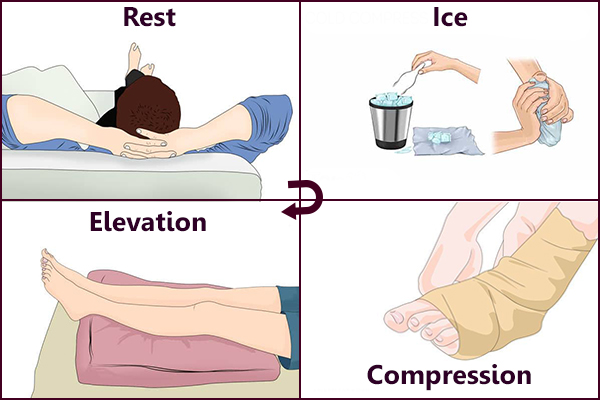
Pain medication
You can also take to non-steroidal anti-inflammatory drugs ( NSAIDs ) like Naproxen and Celecoxib which help to release the muscle pain.
When you have felt severe pain after a workout, your doctor prescribes something stronger medicine.
When the infection is present then the doctor is suggested to take the antibiotic drug.
The doctor is also recommended to do a corticosteroid injection for muscle pain.
You can also use pain relieving gel and spray like volini gel and spray on the site of muscle pain release to muscle pain and swelling.
Hot and cold therapy
For pain relive you can also use hot and cold compresses to the muscle pain area for relieves to discomfort.
It is applied for 15 to 20 minutes at a time and every few hours per day.
Physiotherapy treatment for iliopsoas muscle pain
When the muscle pain is not reduced after the home treatment and pain medication then the doctor has suggested physiotherapy treatment to release muscle pain.
Physiotherapy treatment is used to relieve pain, swelling, spasms, and tightness of muscle pain.
The physiotherapy treatment contains massage, electrotherapy treatment, and exercise therapy.
Massage
When the tender and trigger points are present in the muscle pain area therapist is recommended a massage to release the muscle pain.
Massage is applied after 2 to 3 days of following the RICE principle when you feel to relieve the pain.
Massage is given with the help of the oil and volini gel, and applied for 5 to 10 minutes.
Massage is applied 3 times every day at home.
Electrotherapy treatment
After the RICE principle, pain medication, and massage if the muscle pain is not decreased then used electrotherapy treatment is for released muscle pain.
To relieve the swellings, spasms, and pain therapist suggested to you electrotherapy treatment.
When the trigger and tender points are present therapists apply US ( ultrasound ) therapy for the release of muscle pain.
This treatment is given with the help of gel and applied for 5-10 minutes on the area of pain.
This treatment helps you release pain and swelling.
Relieve to pain therapist is used to SWD ( short wave diathermy ), IFT ( Interferential Therapy ), and TENS ( Transcutaneous Electrical Nerve Stimulation ) on the area of pain.
Short wave diathermy [SWD]: It is a hot treatment for release to spams on the pain area.
Interferential Therapy [IFT] and Transcutaneous Electrical Nerve Stimulation [TENS] are applied with the help of gel and electrodes on the area of pain.
This therapy is used for 10- 15 minutes to the area of pain.
Exercise therapy for iliopsoas muscles pain
After following the RICE principle for 2- 3 days at home and primary treatment and the help of pain drugs, you feel released from the pain.
When you feel too comfortable and released from your muscle pain then the physiotherapist is suggested to you exercise therapy reduce to muscle weakness and tightness.
Exercises for muscle pain include strengthening and stretching exercises.
Stretching exercise helps to relieve muscle tightness as well as strengthening exercise helps you relieve muscle weakness.
Strengthening Exercises
After the follow of electrotherapy and massage for 2 to 3 days release muscle pain by the physiotherapist then the therapist is advised to you strengthening exercises release to muscle weakness.
This strengthening exercise is always suggested when you feel to release pain and when you feel comfortable.
This all-strengthening exercise helps you with muscle weakness and pain.
- Glute Bridge
- Runner’s Lunge
- Hips Elevated
- High Lunge
- Half Frog
- Hero Pose
- Supported Side-Plank Reach
- Lying hip rotation
- Sidekick
- Hip raises
- Leg raises
- Frankensteins
- Hanging Leg Raise
- Bridging Psoas March
- Romanian Chair Leg Raises with Dumbbell
- boat pose
- lunge
Glute Bridge
The patient’s position lying on your back with your arms at your sides knees bent and feet flat on the ground.
Then engage your glutes muscle and lift your hip joint to create a bridge between your shoulders and knees.
Raise the hip joint till you feel a stretch in the iliopsoas muscle in both legs.
When feeling lower back pain then lower your hip joint slightly, but must keep your glutes muscle tight.
Maintain this stretching position for 20-30 seconds.
Then slowly back to the starting position.
Do this exercise 10 times in 1 session and perform 3 sessions daily.

Runner’s Lunge
The patient starts with a kneeling position with both knees on the ground.
Then bring the right foot forward so that the right knee joint is directly above your right ankle.
Extend your left leg so that your left knee is behind your left hip joint and the top of your foot is on the ground.
Then rest your hands on your thigh.
For to deeper stretch, move the top of your back foot into the floor.
Maintain for exercise position for 2-3 minutes, then repeat this motion on the other side.
Do this exercise 10 times in 1 session and perform 3 sessions daily.
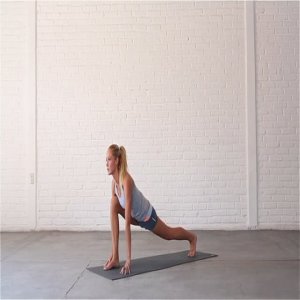
Hips Elevated:
The position’s lying on your back with your legs straight out in front of you and arms at your sides.
Then, put a foam roller and block under your hip joint and low back so that your hip joint is elevated.
Must keep your shoulder joint and head resting on the floor.
Then bend your left knee and wrap your arms around your shin to bring it closer to your chest.
Maintain for this exercise 10 seconds.
Then slowly back to the starting position and repeat on the other side.
Do this exercise 10 times in 1 session and perform 3 sessions daily.
High Lunge
The patient’s position is standing with your feet shoulder-width apart and your hands at your sides.
Step your left foot a couple of feet behind you and flex your right knee joint at 90 degrees, so it is directly above your right ankle joint.
Press your left toe and the ball of your foot into the floor, then extend your arms directly overhead.
Maintain for this exercise 10 seconds, then slowly back to the starting position and repeat on the other side.
Do this exercise 10 times in 1 session and perform 3 sessions daily.
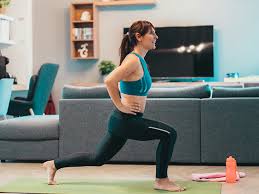
Half Frog
The patient’s starting position is lying on your stomach with your legs stretched out behind you, and then resting your forehead on the back of the hands.
Flex your right knee joint so that it stays parallel to your right hip joint and flex your right foot.
Must be placed on your right shin parallel to your left leg, and then press your right knee joint into the floor to bring your right inner thigh as close to the mat as possible.
Maintain for this exercise 10 seconds, and then slowly back to the starting position and repeat on the other side.
Do this exercise 5 times in 1 session and perform 3 sessions daily.
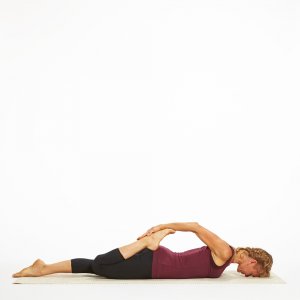
Hero Pose
the patient;’s starting position is a kneeling position with both knee joints on the floor.
Put a block and foam roller between your feet, just under your tailbone, and then flex your knee joint to lower yourself down on the block and roller.
Must keep your knees joint together and the tops of your feet pressed into the floor and sit tall with the shoulder joint directly above your hip joint.
For a deeper stretch in this pose, walk your hands behind you with fingers facing your toes and lean back slightly, and then maintain this exercise for 1 to 2 minutes.
Do this exercise 5 times in 1 session and perform 3 sessions daily.
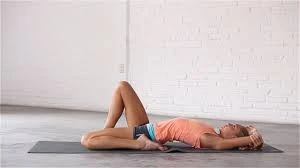
Supported Side-Plank Reach:
The patient’s position is a kneeling position and both knees are on the floor, then extend your left leg out to the side.
Put your right palm on the floor, directly below your right shoulder joint.
Try to reach your left arm over your left ear, and keep the body in a form a straight line from your left ankle joint to your left hand.
Then press the outer edge of your left foot into the floor and rotate your shoulder joint so that they are parallel to the wall in front of you.
Maintain this exercise position for 10 seconds and repeat the activity on the opposite side.
Do this exercise 10 times in 1 session and perform 3 sessions daily.
Lying hip rotation:
The patient’s position is lying on the ground with his/her feet flat and knee joint bent.
After hen lay one ankle joint across the other knee joint.
Rotate the hip joint in and out, and maintain this exercise for 10 seconds
Do this exercise 10 times in 1 session and perform 3 sessions daily.
Sidekick:
The patient’s position is in a standing position and raises one leg out to the side.
Do this exercise on both sides and repeat it 10 times on each side.
When the strength increases, try adding light weights to the ankle joint, and also keeping onto a wall for balance if you require it.
Maintain this exercise position for 10 seconds
Do this exercise 10 times in 1 session and perform 3 sessions daily.

Hip raises
The patient’s position is lying on the floor with both feet planted on the floor near the buttocks, and then try to raise one leg straight up must keep your thigh parallel.
Lift the hip joint off the floor, and maintain this exercise position for 10 seconds
Do this exercise 10 times in 1 session and perform 3 sessions daily.

Leg raises:
Put your both hands and knee joints on the ground.
Then Raise one foot back towards the sky and return to all fours.
Maintain this exercise position for 10 seconds
Do this exercise 10 times in 1 session and perform 3 sessions daily.
Frankenstein
The patient’s position is standing up straight with your arms by your side and stepping forward with your left foot, and trying to swing your leg in the air as high as possible without arching your back.
After then reach forward with your left hand to touch your right foot, and maintain this exercise position for 10 seconds
Do this exercise 10 times in 1 session and perform 3 sessions daily.
Hanging Leg Raise
The patient’s starting position is hanging from a pull-up bar that is high enough so that your feet do not touch the floor when the legs are extended.
With a firm overhand grip try to flex your hip joint and knee joint simultaneously as you draw your legs out and up towards your chest without using the momentum.
Then slowly back to the starting position and repeat, maintain this exercise position for 10 seconds
Do this exercise 10 times in 1 session and perform 3 sessions daily.

Bridging Psoas March
The patient’s starting position is to loop a mini band around the balls of the feet.
After then place your heels on an elevated surface with your toes pointed up with your body straight.
Try to lift your hip joint, engage your core and glute muscles, and bring one knee towards your chest but must keep the other leg straight.
Must avoid the hip joint sagging your butt, then back to the working leg slowly and repeat on the other side, maintain this exercise position for 10 seconds.
Do this exercise 10 times in 1 session and perform 3 sessions and day.
Romanian Chair Leg Raises with Dumbbell
The patient positions herself in the roman chair with a light dumbbell securely between his/her feet.
Must keep your torso upright and press the lower back against the backrest while your forearms rest on the pad.
Try to lift your legs to parallel to the ground by flexing at the hip joint while keeping your knee joint straight.
After then slowly back to the starting position and repeat.
Maintain this exercise position for 10 seconds
Do this exercise 10 times in 1 session and perform 3 sessions daily.
Boat Pose
The patient’s position is sitting on a mat with the torso upright, knee joint bent, and feet flat on the floor.
Lean back slowly and tuck your tailbone under so that you are not putting pressure on it.
While you tilt back try to extend your legs into the air and get your spine in a neutral position by eliminating the arching in your spine.
Raise your chest and must keep your shoulders down and hold for a time, and maintain this pose for 1 to 2 minutes.
Do this exercise 5 times in 1 session and perform 3 sessions daily.

Lunge:
The patient’s position is in a standing position, look straight ahead and take a generous step forward with your right foot.
Must keep the trunk upright throughout the movement, and then bend your extended knee joint and transfer your weight onto the right leg.
Try to continue to lower yourself slowly into the lunge till your left knee joint the floor, and the right knee joint should be directly above your right ankle joint.
Then step back into a standing position and repeat with the left leg in front, and maintain this exercise position for 10 seconds.
Do this exercise 10 times in 1 session and perform 3 sessions daily.
Stretching exercise
After the follow of electrotherapy for 2 to 3 days for the release of muscle pain by the physiotherapist then the therapist is recommended to stretch for release to muscle tightness.
This stretching is used when your pain is removed and when you feel comfortable.
- Standing Hip Flexor Stretch
- Kneeling Hip Flexor Stretch
- lying hip flexor bed stretch
- Table Psoas Stretch
- Kneeling Stretch
- Butterfly stretch
- Pigeon stretch
- Knee to chest stretch
- Half-kneeling hip flexor stretch
Standing Hip Flexor Stretch:
The patient’s position is standing with feet hip distance apart.
Then step the right foot forward into a split and staggered stance, then engage the core muscle and tuck your pelvis bone.
Then put your hands on the right leg.
You must keep your back leg straight and slowly lunge forward with the right leg till you feel a stretch in the front of the hip, groin, and thigh of your left side.
Maintain this stretching exercise for 20 to 30 seconds, and then slowly back to the starting position and change sides.
Do this stretching exercise 3 times in 1 session and perform 3 sessions daily.
Kneeling Hip Flexor Stretch:
The patient’s starting position is placing the hands on the right knee joint.
Then maintain an upright posture and tilt slightly forward till you feel a stretch in the front of the hip, groin, and thigh of your left side.
Maintain this stretching exercise for 20 to 30 seconds, and then hen slowly back to the starting position and change sides.
Do this stretching exercise 3 times in 1 session and perform 3 sessions daily.
lying hip flexor bed stretch
The patient’s position is to lie flat on the back of your bed and place the position with your right leg which is closest to the edge of the bed.
after then slowly let your right leg hang down to the side of the bed, and your leg stays bent with your foot on the bed.
Feel a stretch in the hip flexor.
Maintain this stretching exercise for 20 to 30 seconds, and then slowly back to the starting position.
Do this stretching exercise 3 times in 1 session and perform 3 sessions daily.
Table Psoas Stretch:
The patient’s position is standing on the right side next to the table.
Then lift the right leg behind you and lay it onto the table with the knee joint facing down, and then place the leg straight.
You place a folded towel under your knee joint to alleviate any pressure from the table and keep placing your right hand on the table in front of you.
Your standing leg is put slightly flexed.
Stop this stretching exercise when you feel this stretch in your right hip.
Maintain this stretching position for 20 to 30 seconds, and then slowly back to the starting position.
Do this stretching exercise 3 times in 1 session and perform 3 sessions daily.
Kneeling Stretch:
The patient’s starting position is kneeling with both knees on the floor, then bringing your right foot forward so that your right knee is directly above your right ankle joint.
Must be keeping your shoulders in line with your hips joints.
And then press your right heel and the top of your left foot into the floor, and maintain this stretching exercise for 15 to 30 seconds.
Do the contract and relax your hip flexors for a deeper stretch.
Do this stretching exercise 3 times in 1 session and perform 3 sessions daily.
Butterfly stretch:
The patient’s position is sitting on the floor and putting the soles of the feet together, and then gently pushing the knees toward the ground.
Maintain this stretching position for 15 to 30 seconds, and do this stretching exercise 3 times in 1 session and perform 3 sessions daily.

Pigeon stretch
The patient’s position is in a sitting position with one knee joint bent in front of the body at a 90-degree angle, with the heel toward the opposite hip.
After then extend the other leg behind the body as far as possible, gently try to move the back hip forward and backward, and repeat with the other side.
Maintain this stretching position for 15 to 30 seconds, and do this stretching exercise 3 times in 1 session and perform 3 sessions daily.

Knee to chest stretch:
The patient’s position is lying on your back with legs extended on the ground.
Then slowly flex one knee joint toward your chest.
Must keep your back flat and pull your knee joint as close to your chest if possible without discomfort.
Then stretch your straight leg out as far as possible and squeeze your glute muscle, after that back to the starting position and repeat with your opposite leg.
Maintain this stretching position for 15 to 30 seconds, and do this stretching exercise 3 times in 1 session and perform 3 sessions daily.
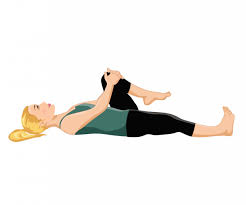
Half-kneeling hip flexor stretch
The patient’s position is kneeling position on the floor with your left foot flat in front of you and your right knee joint on the ground behind you.
Must keep your trunk tall during this exercise, and you can place your hands on your left knee joint for balance.
Try to gently slide your right knee joint back till you feel a small stretch in the front of your hip joint, and then squeeze the right glute muscle like you are pushing forward and bringing your trunk or hip joint toward your left foot.
Tuck your hip joint slightly like creating a pelvic tilt, and maintain this stretching position for 15 to 30 seconds.
Do this stretching 3 times in 1 session and perform 3 sessions daily.
FAQ
What does iliopsoas pain feel like?
The symptoms of Iliopsoas tendinopathy or bursitis are: A deep aching pain felt in the front of the hip ( in the crease of your hip ). A clicking or clunking sensation or sound when bending your hip (lifting your knee). Sharp pain with sitting and standing, mainly after prolonged sitting.
How long does it take for iliopsoas to recover?
A minor iliopsoas strain injury may take up to 3 weeks to fully heal. More serious strains & tears could take up to 8 weeks of healing before returning to the activity of choice.
Can you massage the iliopsoas muscle?
The iliopsoas appears to be quite sensitive to pressure – not to mention the tissues overlying it and the rate of pain is almost always unpleasant. It takes time & caution to do it well and without causing considerable discomfort.
How do you sleep with tight iliopsoas?
If able to sleep on your back with a pillow under your knees place your body in an optimum position. Stretching is straightforward enough, but foam rolling or mobilizing with a lacrosse ball can do wonders to remove a tight psoas.

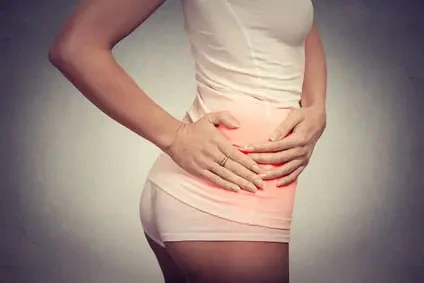


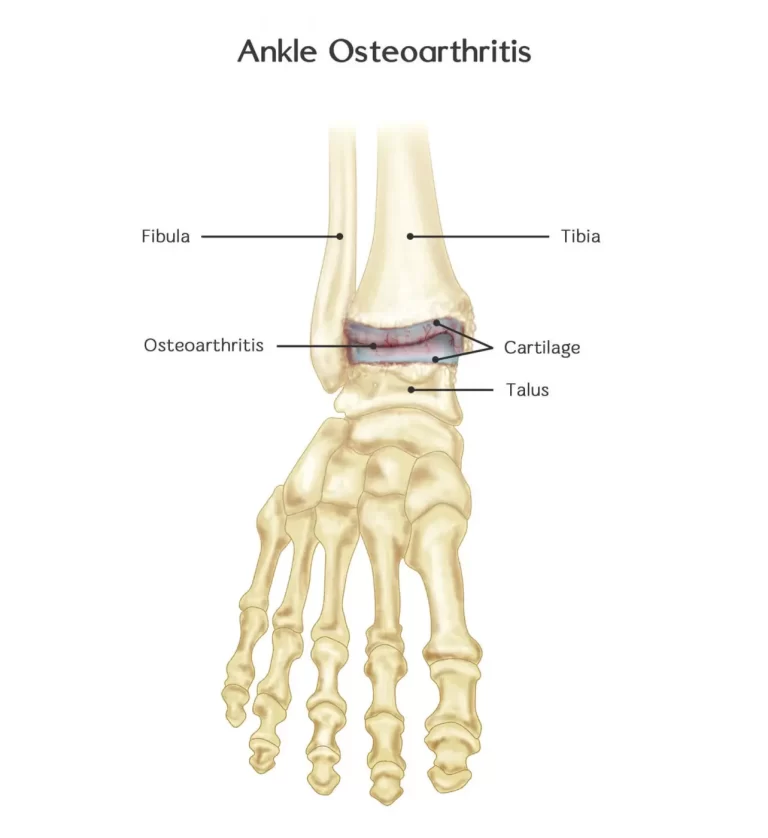
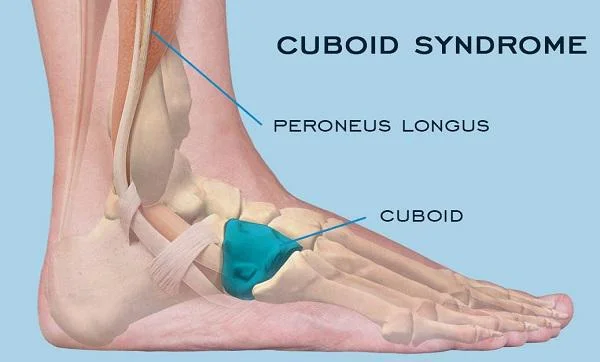
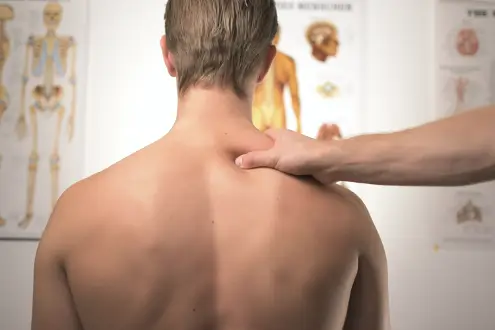

6 Comments